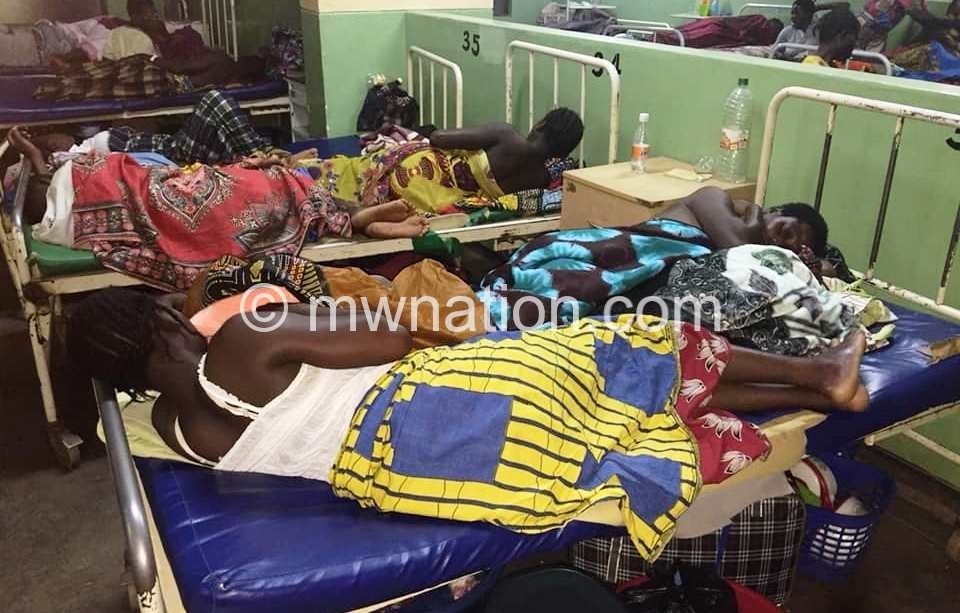Pressure piles on govt
The World Health Organisation regularly sets global targets for reduction of maternal mortality rates. The previous target was four visits during the pregnancy period for which Malawi scored 54 percent due to structural challenges. WHO has now doubled the previous targets. How will the country fair on the tougher targets?
Malawi has one of the highest maternal mortality ratios globally, currently estimated at 675 maternal deaths per 100 000 live births, according to the Health Sector Strategic Plan II (HSSP II), covering 2017-2022, launched in April 2017.

But, according to the plan, the country is targeting to reduce the figure to 458 by end of this year and then further to 400 per 100 000 live births by 2021.
This is still far-off from the Sustainable Development Goals (SDGs) global target of reducing the maternal mortality ratio to less than 70 per 100 000 live births by 2030.
Health rights activists are sceptical that Malawi can effectively fulfil the new plan as current statistics indicate the country’s antenatal attendance—forestalled by a myriad challenges—is among the worst globally at 51 percent.
The activists have said the prevailing challenges facing the health sector would thwart government’s efforts to effectively implement the new and demanding guiding principles.
The WHO ranks Malawi’s health system at number 185 out of 190 countries globally. The ranking is based on several indicators, including health financing and per capita spending on health currently at $40.1. This is the lowest in the Sadc region, whose average per capita spending is $228.
Ministry of Health spokesperson Joshua Malango said several factors affected execution of the previous guidelines. These included long distances to health facilities and traditional beliefs to delay attendance of antenatal services until pregnancy is visible.
Another factor which affected implementation of the guideline, according to Malango, was inadequate human resources, which resulted in long waiting time and poor quality of health services. The Ministry of Health has a vacancy rate of 45 percent.
The new guideline demands that expectant women must have their first antenatal check-up between eight and 12 weeks of pregnancy followed by the second trimester at 20 and 26 weeks.
This is to be followed by the third trimester of five contacts at 30, 34, 36, 38 and 40 weeks and return for delivery in the 41st week if not given birth.
But according to the HSSP II, 24 percent of pregnant women had their first antenatal care (ANC) visit in the first trimester and only 51 percent had four or more visits.
Agreeing with Malango, executive director of Malawi Health Equity Network (Mhen) George Jobe also blamed the situation on high vacancy rate in the health sector—for doctors, clinicians, nurses and midwives, pharmacists and laboratory technicians— at about 50 percent as a major stumbling block to the effective implementation of the guidelines.
Malawi has a doctor to patient ratio of 1:60 000, according to a recent ActionAid International report, against WHO’s recommended ratio of 1:1 000. On the other hand, the country has a nurse-to-patient ratio of 34:100 000 compared to WHO’s recommended ratio of 500 nurses per 100 000 patients.
Jobe suggested government needed to put in place a clear plan and practical strategies such as increasing the health budget to ensure recruitment of all health workers who were trained over the years.
According to HSSP II, development partners contribute 61.6 percent of the total health expenditure (THE) against 25.5 percent from the Malawi Government and 12.9 percent from households.
“Malawi cannot afford to have trained health workers just staying at home when we have such high vacancy rates,” he observed.
Jobe also bemoaned some rural health facilities that do not have maternity wings and inadequate rooms for expectant women awaiting deliveries.
In some rural areas, pregnant women walk long distances to reach the nearest health facilities, against government’s policy that every citizen should reside within an eight-kilometre radius of a health facility.
As of now, according to HSSP II, the proportion of people living within eight kilometres radius of a health facility stands at 76 percent, which is a decrease from 81 percent in 2011.
“This indicates that there is still a significant proportion of the population that is underserved, especially those residing in the rural and hard-to-reach areas,” reads part of the strategic plan.
Because of the long distances and other factors, women are forced to give birth in their homes, mostly with the help of traditional birthing attendants.
“Some expectant women are prevented from attending antenatal clinics due to the unfriendly conduct of some health workers,” observed Jobe.
Another health rights activist Maziko Matemba observed that the country has serious issues that violate expectant women’s right to health while in need of constant observation and care.
The new WHO targets are coming at a time when in its 2019-20 national budget pegged at K1.7 trillion, Malawi has, just like last year, ranked the health sector third, after the education and agriculture. The health sector was allocated K101 billion. n





